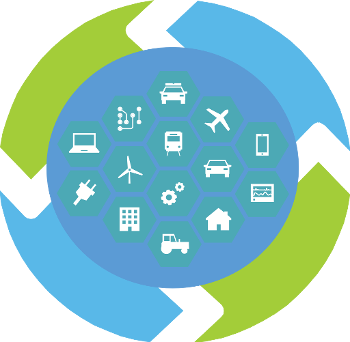Amidst business and economic disruption, modernization of market-leading engineering lifecycle management solution continues
By William Streit | 2 minute read
This isn’t the first time a massive sea change has forced us to suddenly change the way we live and work, and it won’t be the last. It’s during these times that engineering teams provide the great breakthroughs that will take us through the next evolution of business and operations.
As we all work to define what the ‘new normal’ looks like, we expect to see continued disruption across industries and marketplaces. Companies will lean on their engineering and development teams to stretch their limits of creativity and productivity. Now more than ever, tools for product design and development require an end-to-end view across the entire engineering lifecycle.
Throughout our recent IBM Engineering European Academy, we heard repeatedly from customers and business partners that while some of their operations were forced to halt, their engineering teams continued to work. There was a clear theme – engineering teams have been and will continue to lead business through recovery. And success will be directly related to these teams’ ability to respond and adapt, quickly and efficiently.
Over the last several months IBM has continued work on modernizing its Engineering Lifecycle Management (ELM) solution. The introduction of IBM ELM V7.0.1 represents evolution of our entire systems and software development lifecycle offering.
Continuous Improvements for the ELM Products
The ELM V7.0.1 updates represent the ongoing work to roll out improvements across the entire engineering lifecycle management solution – across requirements, test, workflow management and systems design. Our focus has been on improving usability, productivity, and building capabilities that integrate with industry models and standards.
As we emerge from hibernation, the demand for first-to-market competitive advantage will force systems and software development teams to step up to the challenge – increasing productivity while still improving quality and accelerating time to market.
The latest enhancements in the ELM portfolio include improved Agile capabilities, simplifying model-based systems engineering (MBSE) usage, expanded industry standard capabilities (i.e. AUTOSAR enhancements, SAFe 5.0 inclusion, GIT integration, ASPICE capability expansion), broader capabilities around validation & verification (V&V), improved visualization of data, and overall performance.
Delivering an integrated, end-to-end development lifecycle solution enables engineering teams to focus on product development – not searching for data, converting or migrating information, manually tracing between requirements, tests, workflow, or continually validating data currency.
What’s next for ELM?
We’ll keep listening to our customers, industry groups, and the marketplace – working together to deliver continuous improvements to our products. IBM is committed to ensuring systems and software development teams are equipped with the tools they need to develop products in a smarter, safer and more cost-effective way.
Albeit the near-term future is still unclear, it is certain that engineering and development teams will be even more critical as companies pivot to new markets, products, and strategies. And we’ll keep helping our customers manage the growing complexity of product engineering with the speed necessary to deliver faster business outcomes.
Explore IBM Engineering Lifecycle Management
Get the IDC Analyst Report on Digital Transformation in Product Development






